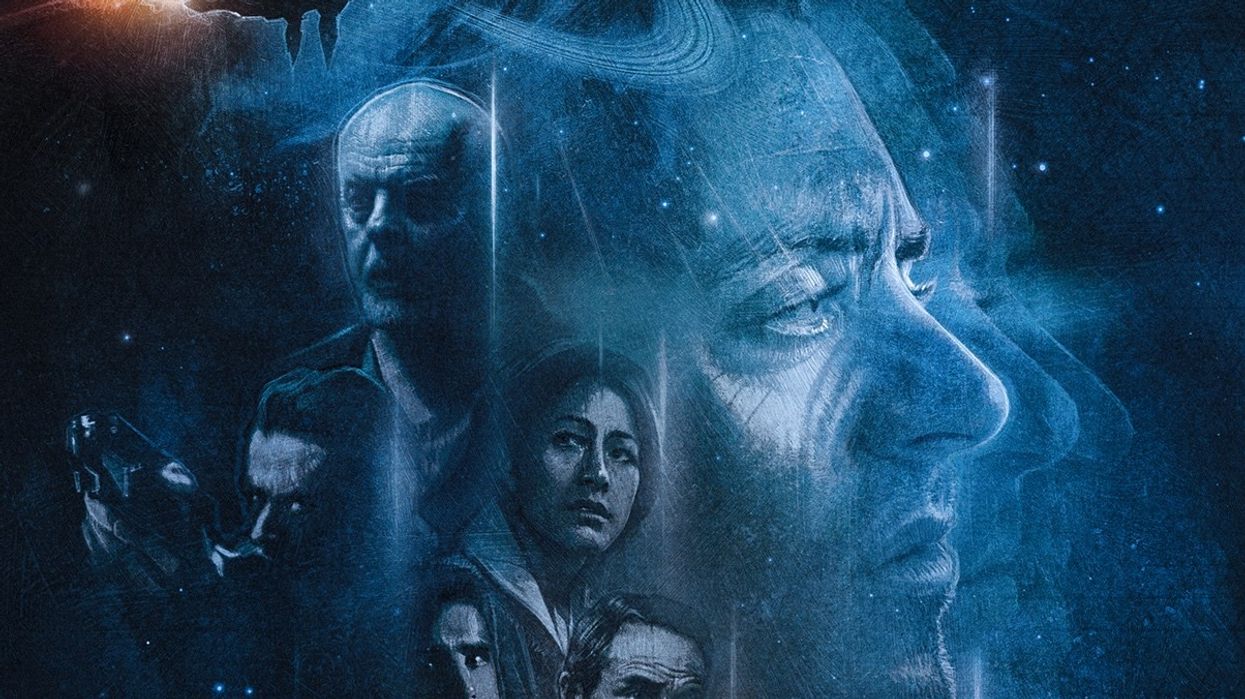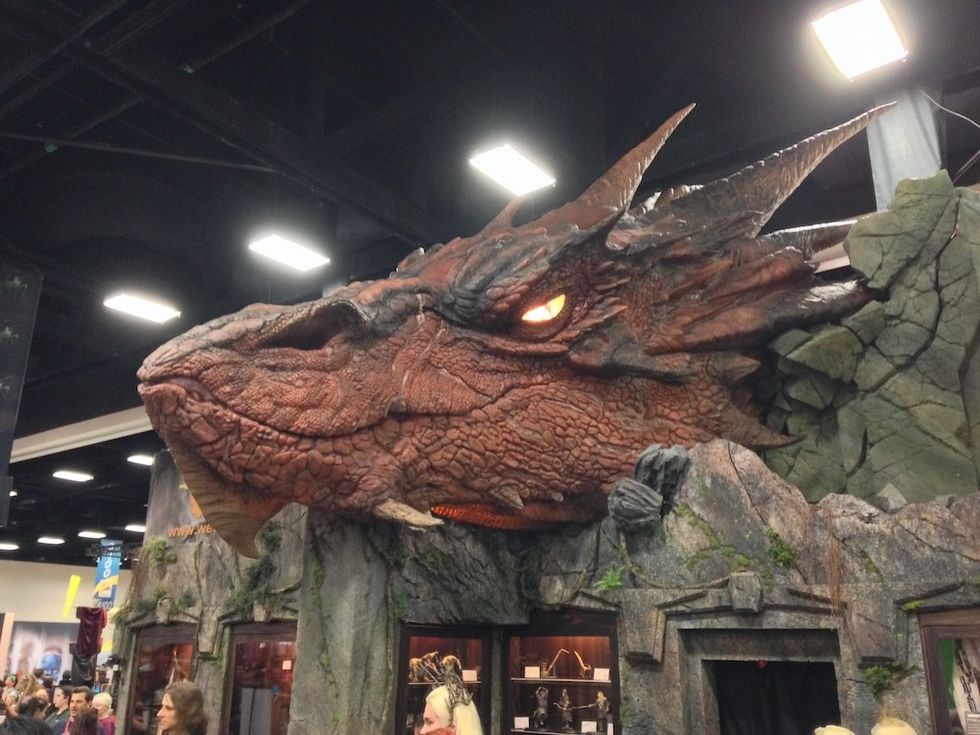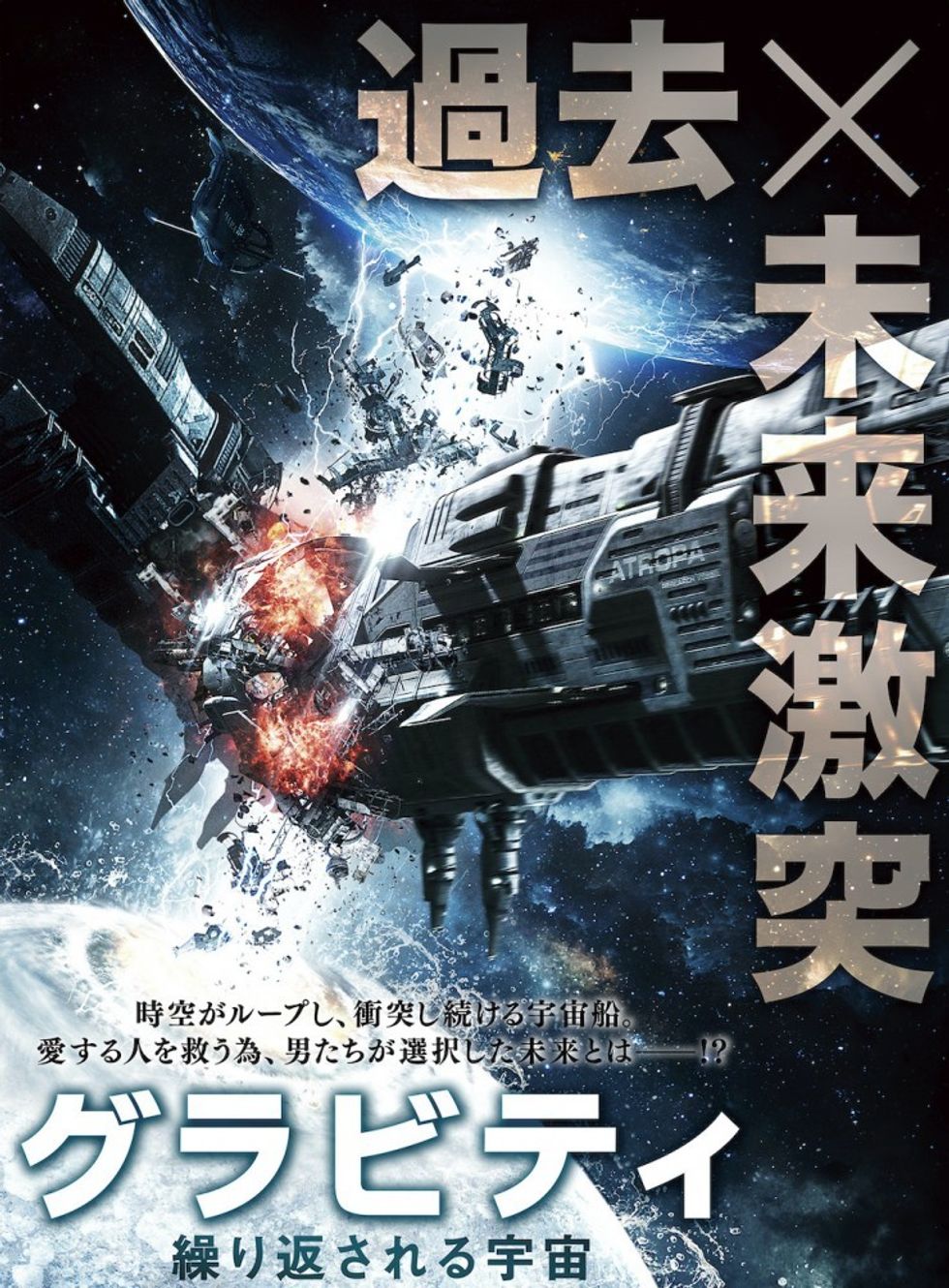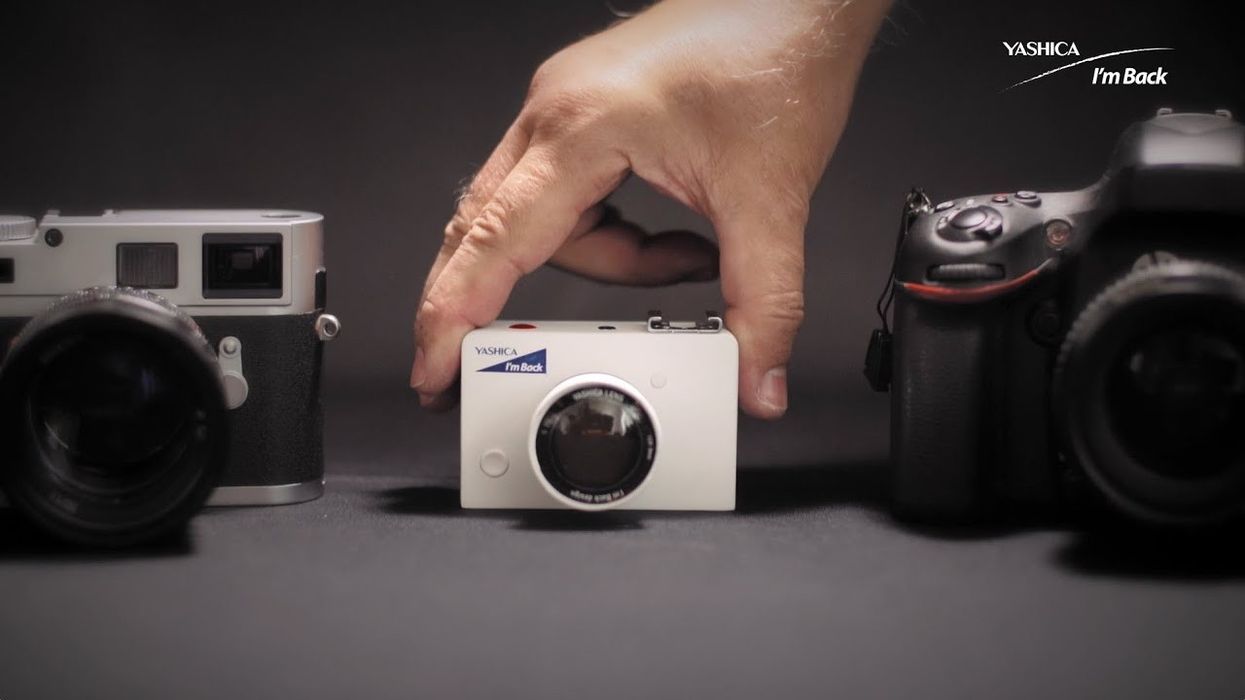Stuck in Limbo—How This Sci-Fi Series Took Eight Years to Make
Sometimes you have to persist with a project for years before it sees an audience.

This post was written by Eli Sasich.
I’m Eli, co-writer and director ofATROPAthe series, a love letter to the grungy science fiction movies of the 70s and 80s about the crew of a research vessel that crash into themselves in deep space.
I’m in a reflective mood, because ATROPA has finally seen a wide release on DUST. It feels completely surreal for the show to be available… but that’s because it was an eight-year journey to actually get here.
Eight. Years. Turns out ATROPA took a very unusual, winding, and often frustrating path to distribution. I’m going to do my best to retrace those steps in the hopes that it may be of some interest (or encouragement) to other filmmakers.
How it all started
ATROPA burst to life as a feature film idea in 2013. After the success of my previous sci-fi short HENRi, I secured representation and moved to LA. Unfortunately, I committed the cardinal sin of not having my next project ready to go, so I was tasked with coming up with a feature story fairly quickly.
I had the rough idea about the crew of a ship crashing into themselves; high-concept and more conventional than HENRi, but excitingly full of juicy philosophical questions ripe for exploration. It also had a banger of a twist—the imagery of that plot point alone would eventually be enough to set this whole journey in motion.
We decided to turn the first 10 pages of the feature script into a short pitch film, which would end on a big cliffhanger. The story was simplified a bit—characters were combined, locations were cut—but it shared the same exact premise as the feature.
In early 2015 we shot the pitch version of ATROPA on the standing spaceship sets at Laurel Canyon Stages (LCS) in Arleta, CA.
LCS was, and continues to be, a popular filming location due to the awesome sci-fi sets they have. The shoot, produced by Chris Bryant, was short and intense—only two days—but we had an awesome cast and crew who were able to pull off something pretty ambitious with next to no money. Our production designer, Alec Contestabile, made miracles happen in our set design, with basically junk.
The story involved an Offworld Officer named Cole Freeman (Anthony Bonaventura), searching for a missing research vessel—the ATROPA. Once found, a mystery unfolds after Cole boards the seemingly derelict ship through an airlock to investigate… without a spacesuit!
I add that detail because it’s the most common criticism we’ve received. “Why would he transfer to another ship without a spacesuit for protection?!” The answer is simple: because we couldn’t afford to rent one!
Post-production on the pitch short would take many months due to the complexity of the visual effects. Our VFX supervisor, Ryan Wieber, was instrumental in helping us accomplish the big, cinematic look we were aiming for. Tobias Richter and his team of effects artists in Germany provided all the CG and spaceship shots. We were all really proud of the finished short, regardless of the budget and time constraints. It achieved the look and tone we were aiming for, and best of all, we formed a great bond as a team.
Once the feature script was ready, we released the short online and pretty immediately gained some amazing traction. Vimeo selected us as a Staff Pick, and tons of different news outlets and blogs ran articles about us (including No Film School). The views started stacking up, and the buzz gave us a burst of momentum, which really helped us as we headed into the room to pitch the feature. We ended up partnering with Pukeko Pictures, a sister company to Weta Workshop, to try and package the film. Weta would create all the physical sets and props, and Pukeko would produce. It also meant we would likely shoot in New Zealand. I was over the moon.
Weta’s Richard Taylor was one of my heroes, ever since watching the Lord of the Rings making-of documentaries, and the Pukeko team was fantastic. Clay and I ended up meeting with Richard and company underneath Smaug the Dragon at San Diego Comic-Con—one of the more surreal and wonderfully geeky moments of my career so far.

Development hell
Despite everyone’s best efforts and tons of pitch meetings, the feature didn’t get off the ground. I couldn’t tell you with any certainty why that is, other than to say sometimes the pieces just don’t come together. We were devastated. Three years had been invested into one project, and it felt like the journey had come to an unceremonious end.
That was a lesson looking back—always have several irons in the fire.
After a few depressing months of trying to decide what to do next, an idea hit me—what if we turned ATROPA into a web series?
The pitch film was popular but ended on a cliffhanger (very frustratingly for most viewers), so why don’t we finish the story short-form? It was a crazy thought—it had been two full years since we shot the short—but I just couldn’t let ATROPA go.

Logistically, that alone was enough to encourage us to move forward. Breaking the script into episodes proved to be a fairly easy task. I’d been living the story backwards and forwards for three years, and the feature already had built-in cliffhangers every 10 to 15 pages. But the biggest question still remained. How would we pay for it?
Financing
HENRi was financed during the early days of Kickstarter, and I had amazing luck with it. It seemed our best option would be to run a crowdfunding campaign for ATROPA. We felt pretty confident that if we could recapture the interest that the pitch short generated, we would have a shot at raising enough money. Crowdfunding looked a lot different at this point, so after some research, we decided to use Indiegogo. On a whim, I reached out to the folks at Indiegogo to introduce the project—and that’s where things got interesting.

Those are elusive words for any filmmaker—rare and beautiful. I can’t remember how long it took me to respond, likely because I was probably in a bit of shock. It was definitely a case of right place, right time. Vimeo was actively seeking new content for their planned streaming service, and the original short had done very well on their platform. Within days, we had a deal and it was official. ATROPA was going to be a Vimeo Original series!
Shooting the series
We shot the bulk of the six new episodes in 2016 over 15 days. The majority of the team returned, with some lovely new additions to the cast and crew for the series. It’s cliche to say, but it was truly a special group, both in front of and behind the camera. Kind, talented, and super hard-working. It was a weird bit of déjà vu to return to the exact same sets to recreate the final shot from the original short, but it felt like home. The team at LCS was as excited as we were to see the actors back on the bridge of the ship. Certainly a “pinch me” moment.

One of my favorite days was working with legendary actor Michael Ironside (Total Recall, Top Gun, Starship Troopers). Michael came on board for a day to play Captain Schreiber. We knew we wanted someone with gravitas and history in the genre to play this important and central role. It was a blast to work with him, and he did not disappoint. He immediately became a part of the team, even jumping in to help with his wardrobe, and sharing lunch (and incredible stories) with the crew.
I directed some of his scenes in a Starship Troopers shirt, which he loved, thankfully.
Post-production
Once we finished up production, the long road of post began.
The series required far more complicated visual effects work than the short, including semi-virtual locations, set extensions, and zero gravity effects. Ryan and Tobias were joined by Matt Hoffman and BluFire Studios to work on a flashback episode that takes place on Earth. Matt and BluFire had done an amazing job with the visual effects for HENRi, and it was great to work with them again. They even got to animate another robot character!
We were locked by July of 2016, and recording composer Kevin Riepl’s incredible score with an orchestra in the studio. It was one of the high points, as I had always wanted to attend a live scoring session. Little did I know, things were about to crumble.
By the end of 2016 we had completed ATROPA, and delivered the full series to Vimeo for review and notes, on time and on budget, I might add, thanks again to Lieren and the team.
Finding a platform
Days passed with no response. Then weeks. I was starting to get nervous—did they hate it? All sorts of scenarios went through my mind, except the one that occurred. Unbeknownst to us, Vimeo was going through a change in leadership and corporate structure while we were in the throes of production. Nearly everyone we had been working with on the series had either been let go, or left the company.
Worst news of all, Vimeo had officially canceled their planned streaming service. Our Vimeo Original series had been reduced to a set of files on my hard drive.
The next several months were a blur. I went through all the stages of grief, but honestly, I was mostly just fucking pissed off. That’s one of the stages, right?

Everything was made far more complicated by the chain of title, and we eventually found ourselves negotiating through lawyers. That process is a lot of things, but “fast” isn’t one of them.
Eventually, in 2017, we connected with Studio71, who took our orphaned show under their wing and found us a new home! After more than a year on the shelf, ATROPA would premiere on the Studio+ mobile platform as part of StudioCanal.
I’ll admit to having some reservations about the epic, anamorphically shot, cinematic sci-fi series we all worked so hard on being watched on a phone. But beggars can’t be choosers, and folks could always stream it to their TVs—at least that’s how I justified it to myself. I don’t want to sound ungrateful, we were honestly lucky to land a new platform. We knew short-form content was kind of the wild west when we set out to make the series, and sure enough, here we were living it.
ATROPA wasfinallyreleased on Studio+ in March of 2018 to little fanfare with minimal marketing. The audience and fans who had been following our progress were frustrated by the complicated steps to download the app, paywall, and the fact that the series wasn’t available in all territories. People were also, unsurprisingly, annoyed about having to watch on their phones.
Anticlimactic as it was, even this new ending wasn’t the end.
Studio+ announced they would be closing their doors and shutting down the app in July 2018. ATROPA had only been available on the platform for a short five months, and very few people got to see it. Once again, we found ourselves orphaned and without a home for the series. Four years had passed since we shot the original short, and two years since the new episodes. ATROPA felt destined to end up unviewable.
My buddy (and 2nd AD, Nathaniel Shriver) and I would joke that the series itself was cursed, mainly because it seemed to shut down every platform it was tied to. Were we the common denominator? I remember him sending me the article about Quibi closing down, with the caption, “Wait, when did ATROPA stream on Quibi?” I had to laugh to keep from crying.
A new home
For those keeping track, there would be three more years of limbo before the ultimate release on DUST. What happened during all that time? Well, a global pandemic for one. Life went on, other projects came and went, and I tried to navigate the world’s new normal as best I could like everyone else. But I truly never gave up on ATROPA. I felt a duty to our amazing cast and crew to find a permanent home for the series. I wanted, more than anything, for everyone’s hard work to finally be seen and appreciated by an audience.
But due to the rights situation, I couldn’t just release the series myself. Other parties needed to sign off as well, and frankly, no one had the energy or incentive to try anymore. I can’t blame them, things hadn’t worked out so well the last time(s). Strangers and fans would still email me weekly asking where they could watch the series, which would sting every single time—but it also kept me motivated.

Finally, in early 2021, there was a glimmer of hope. I really wanted the series to end up on DUST because of their amazing following of sci-fi fans and collection of stellar shorts. It felt like the perfect fit for the project. We had spoken to them in the days before the Studio+ deal got made, and they really wanted the show, but the timing wasn’t right. As the years passed, I kept in touch with the team at DUST, hoping that one day the stars would align and we could work out a release. They never gave up on us.
I was feeling particularly hopeful one week and emailed everyone involved. I pled the case (as I had many times before) that DUST was the perfect home. This time, everything clicked—all the parties involved came together and an agreement materialized within days. I have no idea what changed. Maybe it was just a matter of time, or maybe my squeaky wheel had become just annoying enough.
ATROPA premiered on DUST starting Sept. 13, 2021.
So why was this whole process so difficult? There was no villain. No one to blame or fight with. No one did anything wrong. We simply got caught up in the gears of a shifting industry and had a bout of incredibly bad luck. What have eight years of reflection taught me?
That we were incredibly lucky to have been given the opportunity to make the show in the first place! I’ll be forever grateful to the folks at Vimeo who gave us that chance, and for everything that gamble meant for our cast and crew. The relationships it built, the experiences it afforded us, and the journeys it took us on, are priceless.
If you had told me five years ago, while I was sitting in a pile of paper pulling a feature script apart into episodes, that our project—a labor of so much love and effort—would collect dust on a virtual shelf for years, I still would have called "action." That’s the beauty of filmmaking and the truth of many creative endeavors. Sometimes the journey to the end is a story all on its own.
There were several opportunities for me to resign myself to the idea that this one just didn’t work, but I didn’t see any other choice than to keep pushing. I guess there’s a little bit of Cole in me too. The greatest joy is that after eight long years, we’re not closing a door or walking away from ATROPA. We’re inviting everyone to step onboard. It belongs to the audience now, where it was always meant to be.
With any luck, we won’t shut down DUST in the process.
Watch ATROPA on DUST’s YouTube channel.













